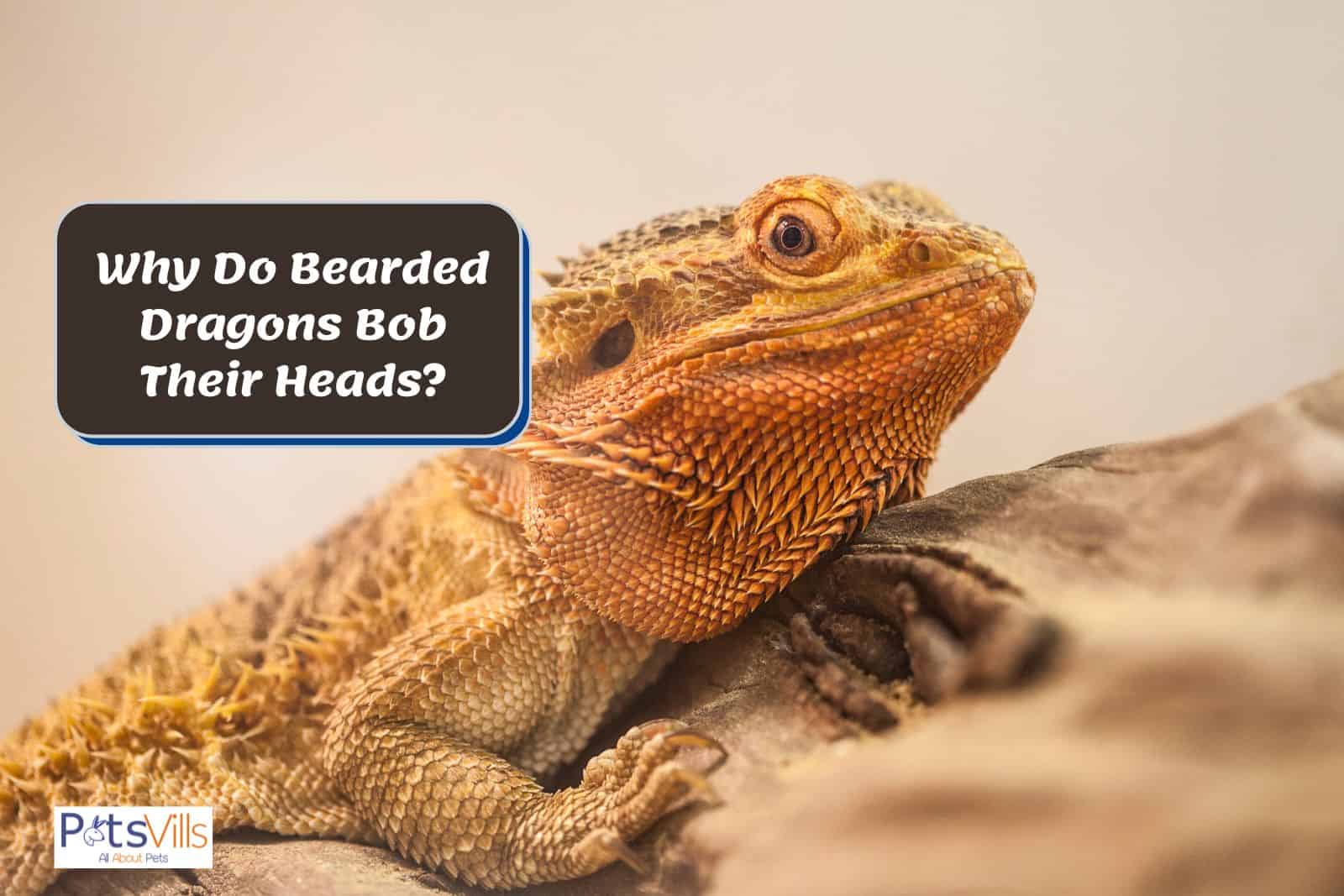Are you wondering, “Why do bearded dragons bob their heads?”
I freaked out the first time I saw my beardie bobbing and went straight to the vet because I was worried my beloved pet was sick.
But it turned out to be a common behavior, so I’m here to talk about why it happens and when you should worry.
Just keep reading.
READ MORE: 10 Fun Facts About Bearded Dragons
Table of Contents
7 Surprising Reasons Why Bearded Lizards Bob Their Heads
While beardies are friendly lizards, it’s hard to interrupt their body language, especially if you’re a novice bearded dragon owner.
So, why do bearded lizards bob their heads?
Usually, bearded lizards bob their heads as a reaction to something in or out of their tank that scares or stresses them. It can also be a mating sign or a way for your pet to express submission/dominance.
But let’s talk in detail about all the possible reasons for this strange bearded dragon behavior.
1. Sign of Dominance
Is your bearded dragon head bobbing fast at another animal or an unfamiliar person? Then, your pet is establishing its dominance and trying to protect its territory.
Wild dragons must be on constant guard against predators and threats in the harsh Australian desert, so they have defensive mechanisms to protect themselves.
Head bobbing is how your beardie makes itself look scarier to warn potential threats to stay away. It’s an instinctive behavior, similar to beard puffing.
A bearded dragon can even bob its head at toys because they’re trying to scare them and appear dominant.
Check this video to see an aggressive dragon bobbing its head:
2. Mating Ritual
Surprisingly, head bobbing is a mating display. It’s how male bearded dragons try to attract the attention of female lizards and signal their desire and readiness to mate.
Black beards and stomping feet are the other signs that indicate your pet lizard is looking for a mating partner. This type of head bob is more noticeable in males, but females also do it.
Check this video to see what mating head bobs look like.
The mating season for wild bearded dragons is between September and March. But in captivity, you can breed your pet reptiles all year round.
3. Sign of Submission Towards Other Dragons
Is your smaller beardie head bobbing at larger bearded dragons or other intimidating creatures? Then have you noticed your beardie doing a slow arm wave? Then it’s all about submission.
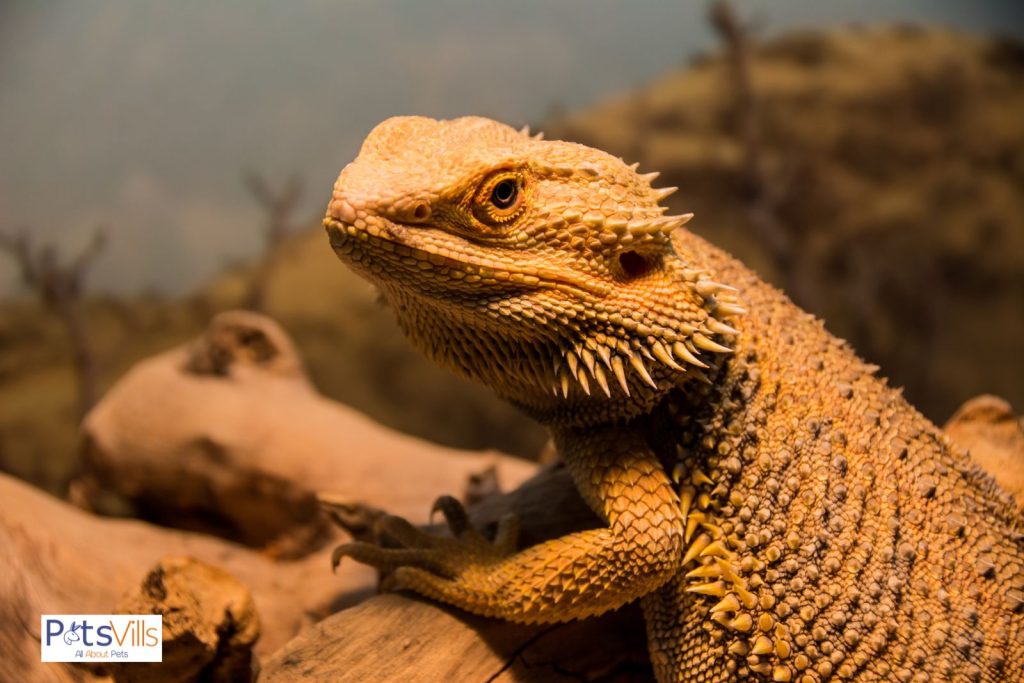
As experts from the VCA explain, “This purpose of this action is not entirely understood, but it is believed to be a form of communication, possibly indicating submission to a larger or more dominant animal.” (1)
Unlike the quick head bob, which shows dominance, the submissive head bob is slow and expresses, “I’m submitting to you. I’m not a threat.”
Such submissive behavior is common when you place one submissive and one dominant lizard in one tank. Reptiles aren’t the most social creatures, so they don’t get along very well.
Specialists from PetMD recommend keeping your pets in separate tanks to avoid dominance displays and aggressive behavior. (2)
If you must keep two beardies in one tank, ensure enough space to prevent conflicts.
Related: Why Does My Bearded Dragon Wave?
4. Submissive Behavior Towards Humans/Other Pets
Bearded dragons can be submissive to humans and other pets and show it by slowly bobbing their heads. It’s how your pet lizard says, “I don’t want to fight with you.”
Since your beardie needs time to get used to you, it’s normal for them to express submission in the first few weeks with you. But once you gain their trust, it should disappear.
5. Form of Communication
Head bobbing is a common form of body language that bearded lizards use to acknowledge nearby lizards, animals, or their pet owner and communicate with them.
Some bearded dragon keepers think this slow, non-aggressive head bobbing says, “I have my eyes on you, so don’t try anything.” But it can also mean, “Hey! Pleased to meet you!”
CHECK: Why is My Bearded Dragon Opening His Mouth?
6. Seeking Attention/Help
Some bearded lizards have expressive personalities and actively seek human attention. In this case, head bobbing is how your beardie asks you to spend more time with it.
Head bobbing is also a way for your lizard to signal stress or show something in its environment is wrong. It can be related to the heat source, humidity, or water bowl.
7. A Sign of Disease
Usually, head bobbing doesn’t indicate a sickness. However, frequent head bobbing in combination with other symptoms is something you should discuss with your reptile vet.
Metabolic bone disease is one of the most common bearded dragon diseases, usually caused by nutritional deficiency. It can cause shaking, swelling, muscle weakness, and lethargy. (3)
MBD can be fatal, but noticing the signs in time can increase the recovery chance if your dragon gets medical attention.
But what about a bearded dragon head bobbing in its sleep? You’d be surprised!
Why Do Bearded Dragons Head Bob While Sleeping?
It’s normal for some pet lizards to bob their heads while sleeping. It’s because your beardie is falling in and out of sleep. However, it can also mean bright light disturbing your bearded dragon’s sleeping routine.
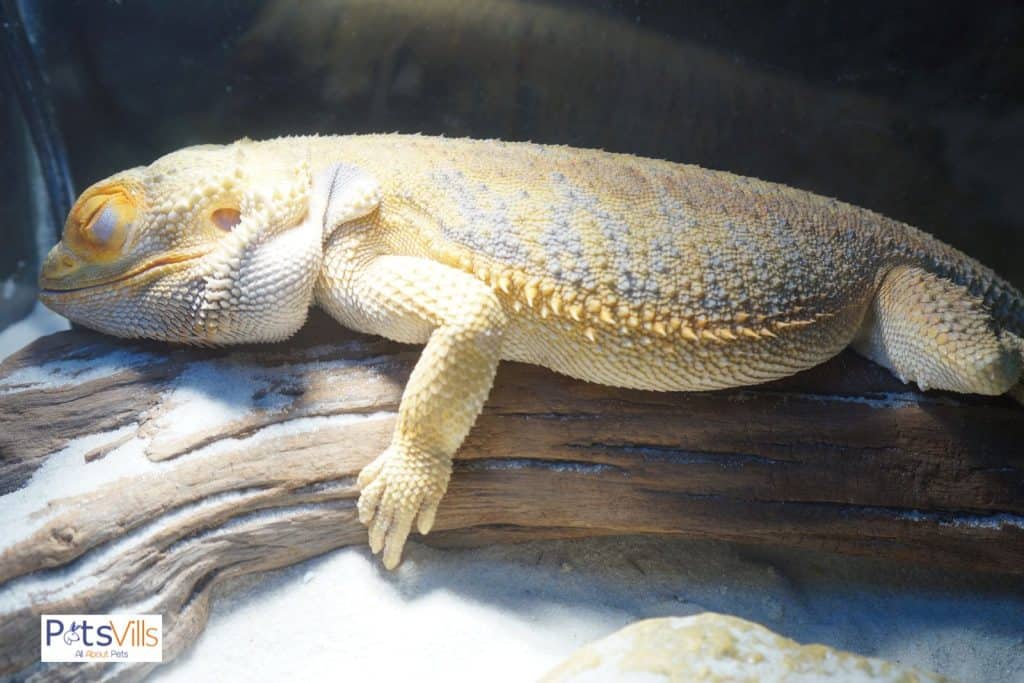
Bearded dragons need total darkness to sleep, so artificial or natural sunlight can affect their sleep cycle and cause head bobbing.
And now, let’s talk about whether all bearded lizards bob their heads.
Do All Bearded Lizards Bob Their Head?
Head bobbing is more common in male dragons because it’s part of their mating ritual and a way to scare/dominate other animals or bearded lizards.
However, female bearded dragons also bob heads, but their type of head bob is slow and calm. It usually signals readiness to mate or submissiveness.
FAQs
Why Does My Beardie Bob Its Head At Me?
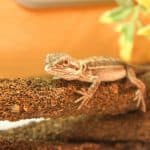
If your bearded lizards bob its head slowly at you, it’s showing submission. Fast and quick head bobbing means your dragon thinks it’s the dominant creature and tries to scare you into submission.
How Do Bearded Dragons Show Affection?
Bearded dragons show affection by remaining relaxed when you pick them up or sitting still. Lack of signs of aggression, such as hissing and biting, also means that your pet lizard likes you.
Why Is My Bearded Dragon Head Bobbing at Nothing?
Since bearded dragons have excellent sight, they notice things you don’t. So, when your pet reptile is bobbing its head at seemingly nothing, it is reacting to something you don’t see.
Why Do Bearded Lizards Turn Black?
A change in your pet’s body color indicates that your beardie is upset or stressed. A darker beard also shows that your lizard is afraid and trying to scare you away.
Conclusion
Head bobbing is a normal behavior for bearded lizards, so it should not freak you out. In most cases, it’s about scaring or acknowledging other animals/beardie.
But if you’re worried about your pet’s health or notice any signs of distress, you should consult a vet as soon as possible.
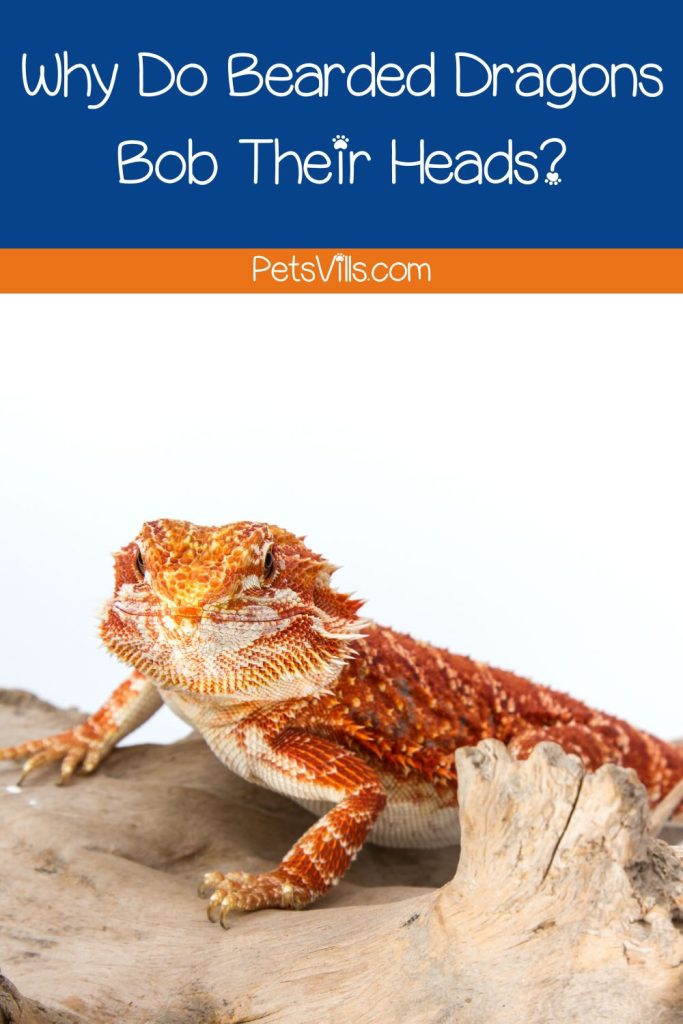
What do you think about this topic? Why do bearded dragons bob their heads? Share your guesses in the comment section.
Resources:
- 1. Bearded Dragons – Owning [Internet]. vca_corporate. Available from: https://vcahospitals.com/know-your-pet/bearded-dragons-owning
- 2. Adding a Second Reptile to Your Tank: Dos and Don’ts [Internet]. www.petmd.com. Available from: https://www.petmd.com/reptile/slideshows/adding-second-reptile-your-tank-dos-and-donts
- 3. Quigg M. MBD In Bearded Dragons | Animal Care Hospital [Internet]. animalcarehospital.org. 2021 [cited 2022 Nov 28]. Available from: https://animalcarehospital.org/2021/11/01/marion-ia-mbd-in-bearded-dragons/
Grigorina grew up surrounded by animals – dogs, cats, cows, goats, sheep, and horses and that has shaped her into what I am today – a crazy cat lady who always has a place for one more cat (or a dog). She has two female cats – Kitty and Roni, and two tomcats – Blacky and Shaggy, but she also feeds her neighbors’ cats when they come for a visit. I just can’t say no to them. Follow her on FACEBOOK AND INSTAGRAM
Read her latest articles HERE
Learn more about her

